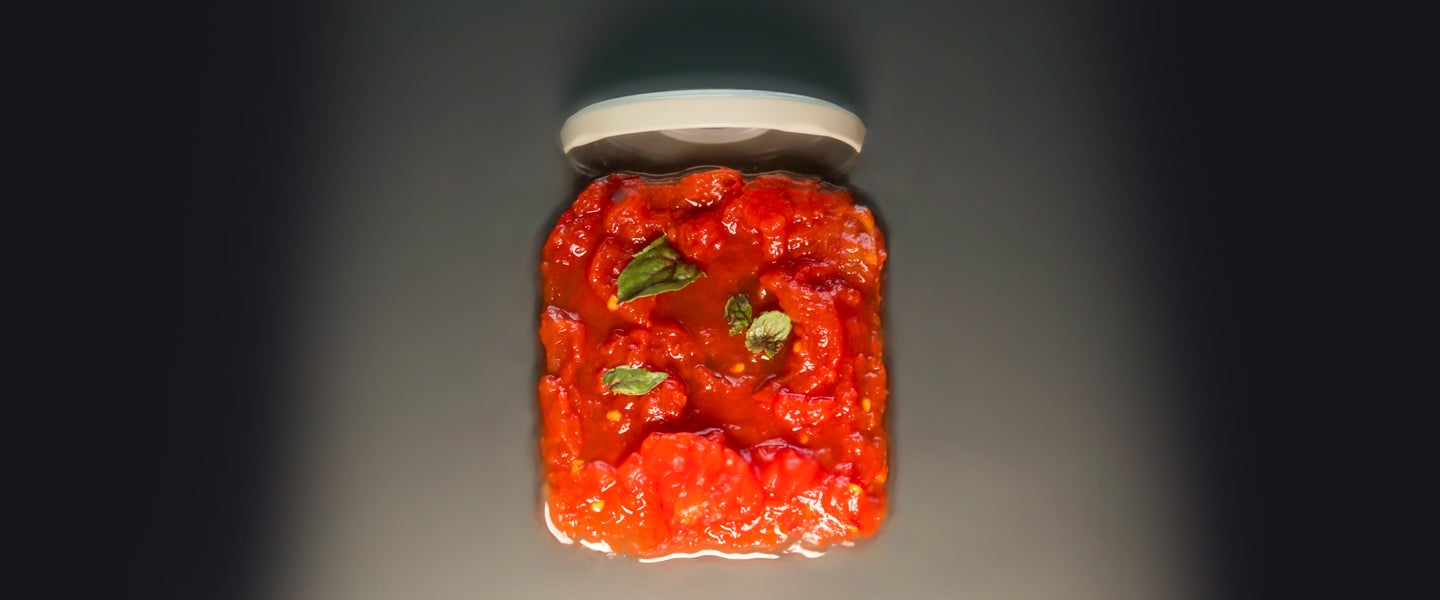In a perfect world, pizza sauce and pasta sauce would be distinct. In a perfect world, we’d have the time not only to understand the differences but also to execute those differences ourselves in making our own pizza and pasta sauces.
Instead, we live in a world of jars. It’s literally fine. Yeah, I’m sure your nonna’s homemade marinara fucking knocks the Prego brand shit I bought out of the park, but most of us have to be our own nonna. And if I’m going to go out of my way to make a pizza myself? There’s not a single chance I’m also going to be making my own tomato sauce to go on top of it. Odds are, I’m gonna just pour that Prego or whatever pasta sauce I have in my cabinet on top of it.
And it will probably taste no different to my uncultured palate than it would had I bought a jar of pizza sauce.
Okay, there are a few tiny differences. You probably don’t want to use your extra-chunky pasta sauce on pizza. But with most major brands, you can take a look at the ingredient lists on the “traditional,” marinara or tomato and basil pasta sauces and the pizza sauce jars and see that they’re nearly the same — the only difference is in the ratio of salts and spices.
For example, the list of ingredients on Classico brand pizza and tomato and basil pasta sauces follow the same order: tomato puree, diced tomatoes in juice, olive oil, salt, spices. There are a few small differences, like that the pasta sauce specifies there’s two percent or less olive oil, salt and spices, whereas the pizza sauce does not. Presumably, this could be because the pizza sauce contains more than two percent of those ingredients. Considering the pizza has 230 milligrams more sodium than the pasta sauce, this makes sense. The pizza sauce also has twice as much sugar per half-cup. Meanwhile, Target brand organic pizza sauce and pasta sauces are nearly identical, with marginal differences in sodium and equal amounts of sugar.
Yet, buying pasta sauce is almost always a better value. For the Target brand, a 14-ounce jar of pizza sauce is $2.19, while a 24-ounce jar of pasta sauce is $2.79. Classico’s jars are similarly 14 ounces and 24 ounces, but the 24-ounce jar of pasta sauce costs only 20 cents more than the 14-ounce jar of pizza sauce.
If you can tell the difference in the different levels of salt and spices, do your thing. But if you find the pasta sauce not salty enough or lacking the right spices, you probably have the ingredients at home to add to the sauce yourself. So at least in my book, the cost difference isn’t quite worth it.
Now, if you’re going to make your own pizza and pasta sauces at home, there is actually a difference. Pasta sauce uses cooked tomatoes. Pizza sauce uses raw tomatoes. Again, your ancient Italian grandma might season things differently, and I bet she is a living Goddess for it, but for the most part, the difference just comes down to raw versus cooked tomatoes.
As for me, I’m pleased whenever I get myself together enough to cook my own food, period. If I’m making a pizza, I’m lucky if I’m even using dough instead of, like, a tortilla. And if you must know, the marinara sauce I put on last night’s pasta will work just fine on this homemade pizza, too.

